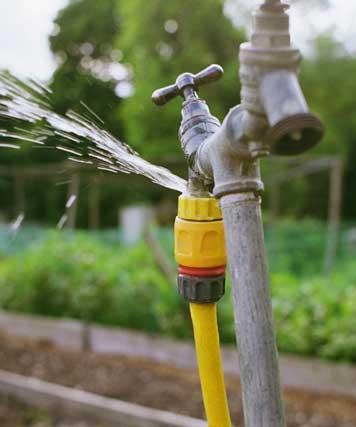Reveal Concealed Water Line Leaks: 6 Proven Detection Techniques
Reveal Concealed Water Line Leaks: 6 Proven Detection Techniques
Blog Article
We have discovered the article on Locating water leaks directly below on the internet and felt it made good sense to share it with you in this article.

Early detection of leaking water lines can reduce a possible calamity. Some small water leakages might not be noticeable.
1. Examine the Water Meter
Examining it is a proven method that aids you uncover leakages. If it moves, that suggests a fast-moving leak. This implies you may have a slow leak that can also be below ground.
2. Inspect Water Usage
Evaluate your water expenses and track your water consumption. As the one paying it, you should observe if there are any type of disparities. If you find sudden changes, regardless of your consumption coinciding, it suggests that you have leaks in your plumbing system. Keep in mind, your water costs should fall under the same variety each month. A sudden spike in your expense indicates a fast-moving leakage.
Meanwhile, a steady boost monthly, despite having the exact same routines, shows you have a slow-moving leak that's also gradually escalating. Call a plumber to completely examine your building, especially if you really feel a warm location on your flooring with piping underneath.
3. Do a Food Coloring Examination
30% comes from toilets when it comes to water intake. Test to see if they are running appropriately. Drop specks of food shade in the container as well as wait 10 mins. There's a leakage in between the storage tank and dish if the color in some way infiltrates your dish during that time without flushing.
4. Asses Exterior Lines
Don't fail to remember to inspect your exterior water lines also. Should water leak out of the link, you have a loosened rubber gasket. One little leakage can waste lots of water as well as increase your water costs.
5. Evaluate as well as Assess the Circumstance
Homeowners should make it a habit to inspect under the sink counters and also also inside cupboards for any bad odor or mold and mildew development. These 2 red flags indicate a leak so punctual focus is needed. Doing routine evaluations, also bi-annually, can save you from a major problem.
Extra notably, if you understand your house is already old, maintain a watchful eye on your heating units, tubes, pipelines etc. Look for discolorations and damaging as a lot of pipes and also home appliances have a life span. They will additionally naturally deteriorate due to tear as well as use. Don't wait for it to escalate if you believe dripping water lines in your plumbing system. Call a professional plumber immediately so you do not wind up with a horrible mess in your home.
Early detection of leaking water lines can alleviate a prospective calamity. Some small water leaks might not be visible. Inspecting it is a surefire means that helps you discover leaks. One little leak can waste bunches of water as well as spike your water expense.
If you think leaking water lines in your plumbing system, do not wait for it to intensify.
How to Know If Your Home Has a Hidden Leak
Water Meter Reveals Inexplicable Water Usage
If you’d like to test whether or not there’s a leak somewhere in your home, you can do this using your water meter. Here is how to conduct the test:
Don’t use any water in your home for at least 30 minutes; this also means not turning on faucets or water-using appliances.
Go outside, and check your water meter for activity.
If your water meter shows that there was activity, even though no one was using any water, this proves that there is a leak in your home.Visible Mold or Mildew Growth
Leaks behind walls create moist, dark environments that allow mold and mildew to grow and thrive. Eventually, you might see mold growth forming on the wall closest to a hidden leak.
If mold is growing in an area that receives a high amount of moisture, such as a bathroom, it may simply be an indication that better ventilation is needed. However, if you see mold growth on a wall or the ceiling in an area where you would not expect, you probably have a hidden leak.
Musty, Mildew Odor
Sometimes you might not be able to see the mold or mildew that is growing as a result of a leak. However, the smell can give the problem away just as easily. If you catch a whiff of something musty, there’s a good chance that old water is collecting somewhere in your home that you can’t see.
Stained/Warped Walls, Ceilings, or Floors
When your home soaks up water, a variety of red flags can become visible, including ceiling stains, bubbling drywall, warped walls, and sagging floors. While these issues can be caused by excess humidity, they can also be signs that a pipe or plumbing connection has started leaking behind your walls.
Inexplicably High Water Bill
After a while, you get a general sense for what your water bill should be. If you own a pool or sprinkler system, your bill will tend to be higher during summer. However, if you receive a water bill that seems especially high, and you can’t figure out what caused it, then you may have a hidden leak somewhere that’s increasing your bill.
https://www.plumbingjoint.com/blog/2019/july/how-to-know-if-your-home-has-a-hidden-leak/

Do you enjoy reading about Hacks to detect leaks? Create a remark directly below. We will be interested to see your reactions about this page. We are looking forward that you come back again in the near future. Are you aware of someone else who is inquisitive about Leaking water lines? Do not hesitate to share it. We enjoy reading our article about Top leak detection hacks.
Fast response, call now! Report this page